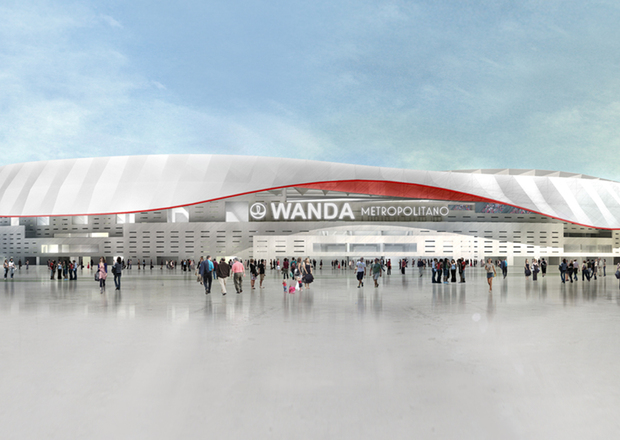New stadiums are under consideration or construction across Europe this winter, with clubs from several major European leagues in the mix.
Here are the season’s top stadium stories from across the pond:
5. Hertha Berlin planning to move – in 2025. Hertha has played their home games at Berlin’s Olympiastadion since 1963, and the club recently extended a contract to play there that was due to expire this year. Late last year, though, the club announced that at the end of that lease, in 2025, that it plans to move out. The Olympiastadion, a 74,000 seat venue, was built for the 1936 Olympics, and hosted the World Cup final in 2006, and the Champions League final in 2015. The club is currently exploring site options in Berlin, with further announcements expected early this year.
4. Bournemouth hoping to solidify gains with a larger stadium. The Premier League’s Cherries stated the intention to build a new stadium for the 2020/2021 season, abandoning the historic Dean Court – currently named Vitality Stadium. The club has experienced rapid growth – promoted three times in six seasons – from League One to the Premiership, and they’ve simply outgrown their Kings Park facility, built in 1910. The current stadium is the smallest in the Premier League, with a capacity of 11,464. The club wants to build on its success, and according to a statement, “become an established Premier League club in a stadium which is befitting of our status.” They are looking for a site on which to build.
3. Tottenham’s timeline the subject of rumors. Much has been written about the new Tottenham stadium, but the latest news was conflicting as to the project’s timeline. ESPN FC reported in December that the club has yet to activate their option to play all of next season’s matches at Wembley Stadium. The delay has ignited speculation as to whether the club was ahead of or behind schedule, with some suggesting the new pitch could be laid after this season for an early move, while others suggesting the project’s complexity could set the projected opening back a season. No official announcement of a change in plans or timeline have come from the club – at this point, the reporting is based largely on speculation.
2. AS Roma set to break ground. Another club looking to move from a former Olympic stadium is the Italian giant AS Roma. The club announced plans to build a new stadium two years ago, but dirt has not yet shifted. Club President James Palotta announced in December that work was to begin in March on the 52,500-seat Stadio della Roma. The club originally planned to move into the stadium this season, but now hope to play there in 2019/2020. CEO Umberto Gandini said, “As usual in Italy, we work through a lot of problems and difficulties on the administrative and bureaucratic aspects,” but called the billion-dollar development project “one of the most important, if not the most important, projects in southern Europe that you are going to see in the next few years.”
1. Atletico Madrid’s imminent move. The most interesting stadium story in Europe this year is in Madrid, where the city’s “other” team is moving across town this summer, if the stadium is done….
The club announced plans in 2009 to leave their home of 50 years, the Estadio Vicente Calderon. For its new stadium, the club chose to re-build and expand La Peneita, or “the comb,” a small stadium on the city’s outskirts. The stadium was built in the 1990’s as part of the city’s failed bid to host the World Athletic Championships, but has been little-used.
It was announced in December that the new stadium, a 70,000-seater, will be called the Wanda Metropolitano, a compromise of corporate and historical naming. Wanda Group, the Chinese conglomerate, is the corporate sponsor, and the Stadium Metropolitano de Madrid was where the club played from 1923 to 1966. The name is an attempt to both please the supporters and line the club’s pockets.
Like almost any major move, speculation surrounds whether the new venue will be ready in time for next season – both construction and supporting facilities have been a concern in Madrid. “The stadium will be a reality next year,” club president Enrique Cerezo said. “We are working as a team with the regional government and the town hall so that we can have installed for next season new lights, new services, parking, restaurants, metro, everything.”
New stadiums are on tap across Europe, in both the short and the long term. Clubs of every nation recognize facilities are a key component in future success, and they are acting accordingly. Fans across the continent will benefit for years to come from the results.
Rendering courtesy Atletico Madrid.
This article first appeared in the weekly Soccer Stadium Digest newsletter. Are you a subscriber? Sign up here for your free subscription!

